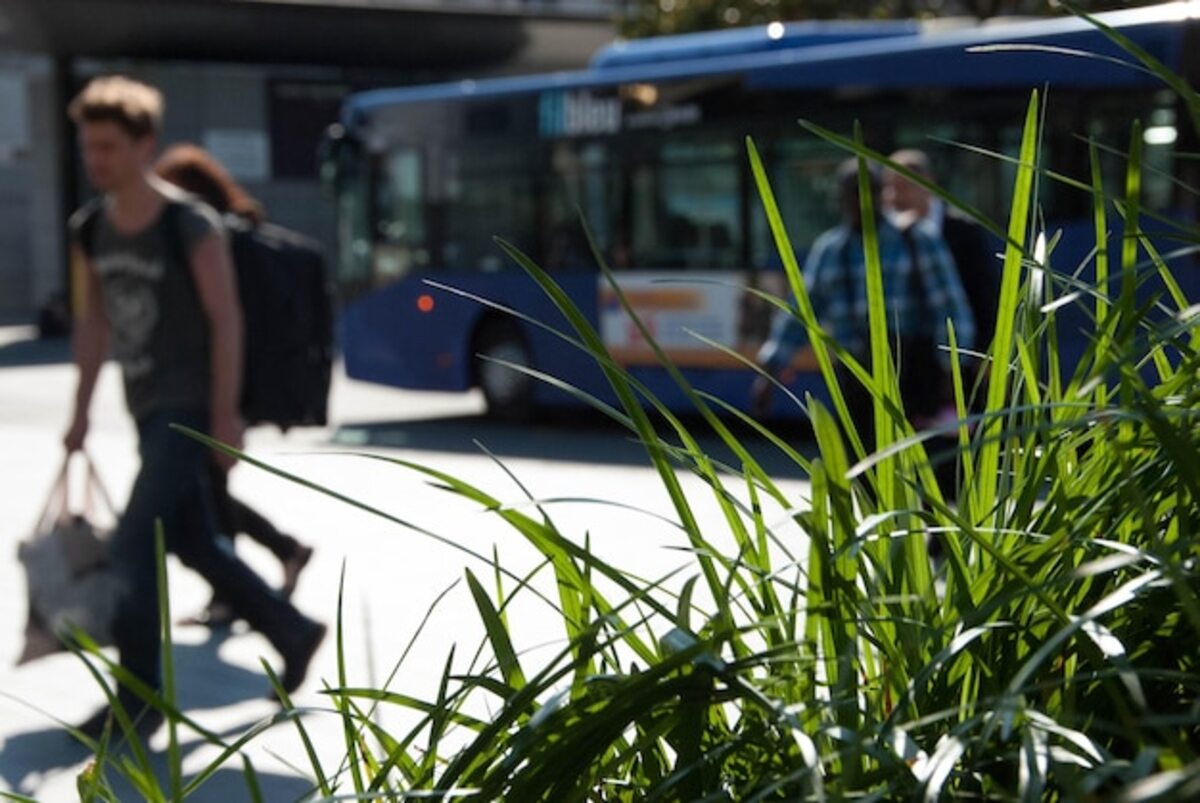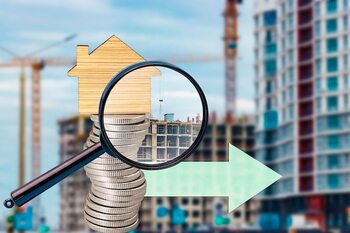Invisible factors that increase the added value in emerging areas

The invisible factors that elevate property value in emerging areas are the best-kept secret of smart investors. In a world where location is key, we often overlook crucial elements that can transform an area into a magnet for buyers and renters. From infrastructure development to demographic changes, understanding these aspects can be the difference between a mediocre investment and one that yields great returns. Discover how to identify these hidden variables to maximize your investment in the areas with the highest potential.
The influence of public transportation on property value
The connection between public transportation and the appreciation of properties is a fundamental aspect that is often overlooked. Emerging areas with good transportation infrastructure, such as subway lines, buses, and trams, tend to attract a greater number of residents. This is because future tenants and buyers value accessibility in their daily lives; reduced commuting time can significantly improve quality of life. When an area becomes more accessible, it not only increases its appeal but also fosters a rise in demand for real estate. As a result, property prices begin to climb, thereby increasing their appreciation.
Furthermore, the development of public transportation is usually accompanied by other urban improvements, such as parks, shops, and basic services. This synergistic effect transforms not only the physical landscape of the place but also its social perception. Smart investors should pay attention to these changes: by observing how transportation routes are planned and which areas are being prioritized for this type of infrastructure, they can anticipate where significant growth in real estate prices will occur. The combination of improved access and cohesive urban development can result in vibrant areas that attract both young families and professionals seeking a comfortable and connected life.
2. The role of technology companies in urban growth
Technology companies play a fundamental role in urban growth, acting as catalysts for transformation in emerging areas. Their arrival not only involves job creation but also attracts young and dynamic talent seeking a higher quality of life. These professionals often prefer areas with adequate infrastructure, access to services, and recreational options, which automatically raises interest in those areas. As these companies establish their offices and innovation centers, they begin to modify the cultural and social landscape, thereby driving real estate demand.
Additionally, technology companies promote the development of essential infrastructure. Investments in digital connectivity, efficient public transportation, and community spaces are just a few examples of how their presence can transform a neighborhood. These types of improvements not only benefit the employees of these companies but also create a domino effect that attracts other businesses and local shops. Over time, this contributes to a significant appreciation of real estate value in the area, making it a coveted place to live and invest. Recognizing this phenomenon is key for any investor looking to identify hidden opportunities in the market.
3. Green spaces: a luxury or a necessity?
Green spaces have ceased to be considered a luxury and have become a fundamental necessity in urban development. In emerging areas, the presence of parks, gardens, and recreational areas not only improves the quality of life for residents but also serves as a decisive factor in assessing property value. These spaces provide a respite amid urban bustle, promote physical and mental well-being, and create a sense of community among neighbors. As more people seek homes that offer a connection to nature, properties near these spaces tend to appreciate more quickly.
Additionally, studies have shown that areas with abundant green spaces tend to attract young families and professionals who prioritize well-being and sustainability. This demographic shift drives demand for housing in these areas, which increases their value. In this context, investors must pay attention not only to the geographical location of their properties but also to the natural environment surrounding them. The integration of green spaces not only enhances the aesthetic appeal of the area but can also positively influence factors such as safety and access to essential services, further elevating real estate value in the process.
4. The importance of security and its effects on property value
Safety is one of the most influential factors in the appreciation of properties, especially in emerging areas. When an area is perceived as safe, it not only attracts families looking for a home but also investors and developers interested in establishing businesses. This perception of safety can result from various community initiatives, such as the creation of neighborhood programs or improvements in public lighting, which foster a more welcoming and protected environment. As crime rates decrease and trust in the community increases, property prices tend to rise, thus creating a positive cycle that benefits everyone involved.
Additionally, security directly affects the resale value of a property. Buyers are often willing to pay more for homes located in areas where they feel safe and secure. This means that even small changes in the perception of risk can have a significant impact on the local real estate market. On the other hand, areas with high crime rates tend to suffer from constant depreciation, which discourages both investment and urban development. In this sense, efforts to improve security not only enhance community well-being but also act as catalysts for economic growth and increased property value in those emerging areas.
5. How educational centers enhance the attractiveness of an emerging area
The presence of quality educational institutions in an emerging area not only enhances the academic offerings but also acts as a magnet for families looking for a place to settle. Well-rated schools often increase the demand for housing in their vicinity, as parents prioritize access to a better education for their children. This trend drives up property values in nearby areas, transforming previously neglected regions into attractive options for buyers and renters seeking educational quality.
Additionally, educational institutions foster an active and engaged community, creating a conducive environment for social and economic development. Extracurricular activities and community events organized by schools create opportunities for residents to connect with each other, strengthening the social fabric of the area. This sense of community not only pleases those who already reside there but also attracts new tenants and investors interested in being part of a vibrant and dynamic environment, thus contributing to the sustained growth of property values in the area.
6. Community projects: building cohesion and real estate value
Community projects play a crucial role in enhancing property value in emerging areas by fostering a sense of belonging and cohesion among residents. Initiatives such as the creation of parks, recreational spaces, and cultural centers not only beautify the environment but also invite active participation from the inhabitants. When people engage in their community, an environment conducive to social and economic growth is generated, which in turn attracts new buyers and tenants interested in being part of a dynamic and vibrant neighborhood. The perception of a united community can be decisive for those looking to invest in properties.
Additionally, these projects can have a direct impact on real estate value. An area that features regular community activities, such as local markets or cultural fairs, becomes a focal point that drives interest in the area. Developers and potential owners often view these features positively when considering an investment. Collaboration among residents, nonprofit organizations, and local authorities can transform neglected spaces into centers of social activity, thereby increasing demand for nearby properties. In this context, community projects not only build social cohesion; they are also key drivers for raising property values in the long term.
7. Cultural trends and their impact on neighborhood perception
Cultural trends play a fundamental role in the perception of a neighborhood, as they shape the identity and appeal of a community. When an area begins to attract artistic events, food festivals, or community activities that celebrate cultural diversity, it transforms into a meeting point for different social groups. This cultural effervescence not only enhances the quality of life for residents but also attracts new tenants and buyers interested in living in a vibrant and dynamic environment. The popularity of these events can be a clear indicator of the potential growth of an emerging area.
Moreover, access to cultural spaces such as museums, galleries, and theaters can significantly influence purchasing and investment decisions. Communities that promote creativity and cultural exchange tend to generate a positive perception among potential residents. This translates into a higher demand for local properties, which increases their value. As neighborhoods adopt these distinctive cultural characteristics, they become not only places to live but also desirable destinations for those seeking enriching experiences within their everyday environment.
8. Gentrification: opportunities and risks for investors
Gentrification is a phenomenon that can offer both opportunities and risks for investors in emerging areas. On one hand, the revitalization process of an area can attract new residents and businesses, increasing the demand for housing and, consequently, the appreciation of properties. Investing in an area that is experiencing this change can result in significant short-term returns, especially if the right moment to enter the market is identified. Investors attentive to signs of gentrification, such as the arrival of boutique shops or public infrastructure projects, can strategically position themselves before prices soar.
However, gentrification also carries inherent risks. As prices rise, there is a possibility that original communities may be displaced, which can lead to social tensions and local resistance. Additionally, if an investor does not adequately analyze market dynamics or ignores the needs and desires of current residents, they may face difficulties in renting or selling their properties later on. Therefore, it is essential to balance financial potential with a deep understanding of the social and cultural context of the area to ensure sustainable and ethically responsible investments amid urban change.
9. Analysis of successful cases: lessons learned from emerging areas
The analysis of successful cases in emerging areas reveals that the strategic decisions made by developers and investors can offer valuable lessons on how to maximize appreciation. For example, in several cities that have experienced a resurgence, it has been observed that the creation of public spaces and green areas not only improves the quality of life for residents but also attracts new tenants and buyers. These spaces foster greater social cohesion and transform the urban landscape, turning underestimated locations into desirable destinations. By studying these examples, investors can identify patterns and strategies that have proven effective in revitalizing communities.
Another crucial aspect derived from the analysis of successful cases is the importance of community marketing and collaborative development. Initiatives that involve citizens in the planning process not only create a sense of belonging but also stimulate interest in the area. Projects like local fairs, cultural programs, and community events are powerful tools to attract both residents and entrepreneurs. By learning from these inclusive approaches, investors can adopt similar tactics to strengthen their connection with the community and foster a conducive environment for economic and social growth in emerging areas.



